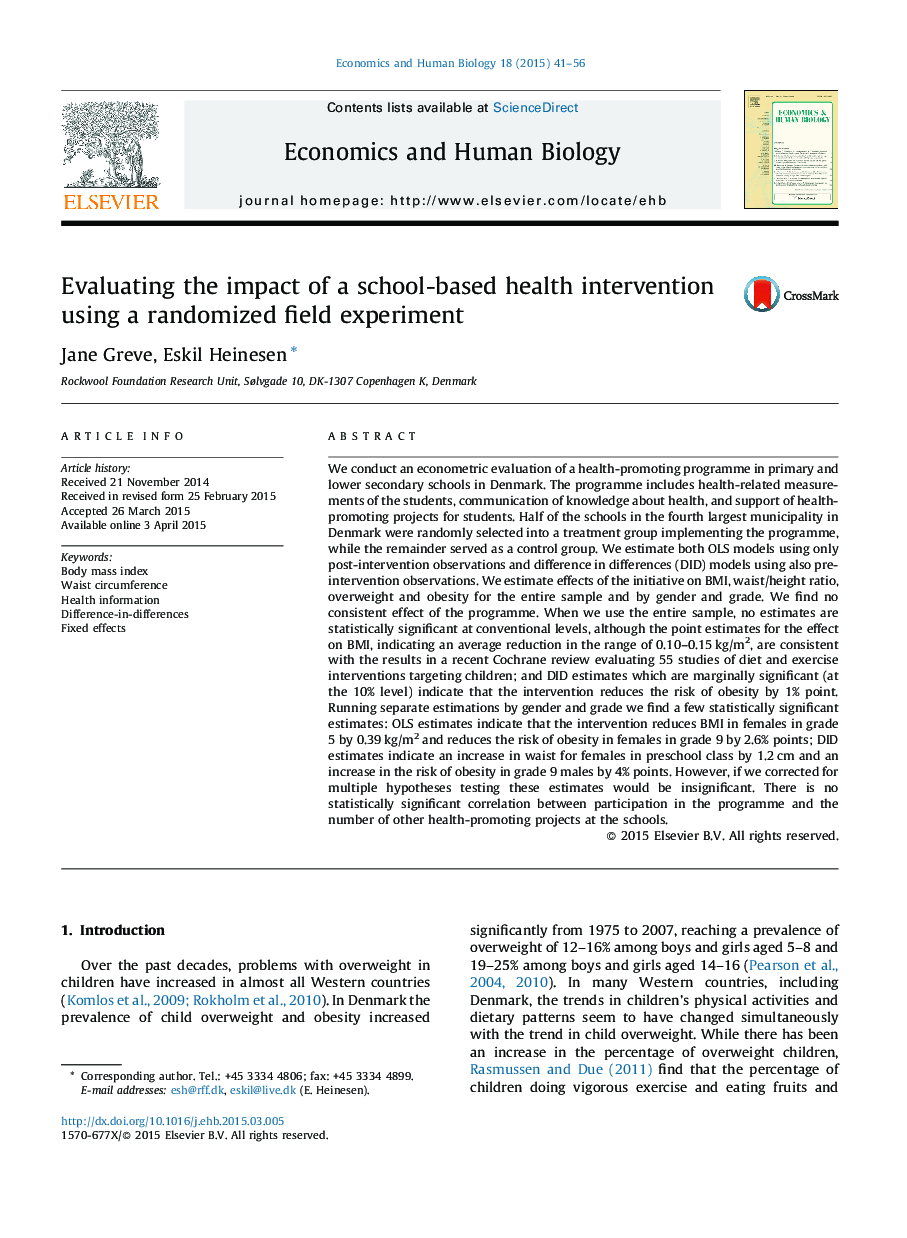| Article ID | Journal | Published Year | Pages | File Type |
|---|---|---|---|---|
| 5056972 | Economics & Human Biology | 2015 | 16 Pages |
â¢We evaluate a health intervention in primary and lower secondary schools in Denmark.â¢The intervention includes health measurements of students and health information.â¢Schools were randomly selected into treatment and control schools.â¢Overall, we do not find statistically significant effects of the intervention.â¢Point estimates indicate that the intervention reduced BMI by 0.10-0.15 kg/m2 on average.
We conduct an econometric evaluation of a health-promoting programme in primary and lower secondary schools in Denmark. The programme includes health-related measurements of the students, communication of knowledge about health, and support of health-promoting projects for students. Half of the schools in the fourth largest municipality in Denmark were randomly selected into a treatment group implementing the programme, while the remainder served as a control group. We estimate both OLS models using only post-intervention observations and difference in differences (DID) models using also pre-intervention observations. We estimate effects of the initiative on BMI, waist/height ratio, overweight and obesity for the entire sample and by gender and grade. We find no consistent effect of the programme. When we use the entire sample, no estimates are statistically significant at conventional levels, although the point estimates for the effect on BMI, indicating an average reduction in the range of 0.10-0.15Â kg/m2, are consistent with the results in a recent Cochrane review evaluating 55 studies of diet and exercise interventions targeting children; and DID estimates which are marginally significant (at the 10% level) indicate that the intervention reduces the risk of obesity by 1% point. Running separate estimations by gender and grade we find a few statistically significant estimates: OLS estimates indicate that the intervention reduces BMI in females in grade 5 by 0.39Â kg/m2 and reduces the risk of obesity in females in grade 9 by 2.6% points; DID estimates indicate an increase in waist for females in preschool class by 1.2Â cm and an increase in the risk of obesity in grade 9 males by 4% points. However, if we corrected for multiple hypotheses testing these estimates would be insignificant. There is no statistically significant correlation between participation in the programme and the number of other health-promoting projects at the schools.
